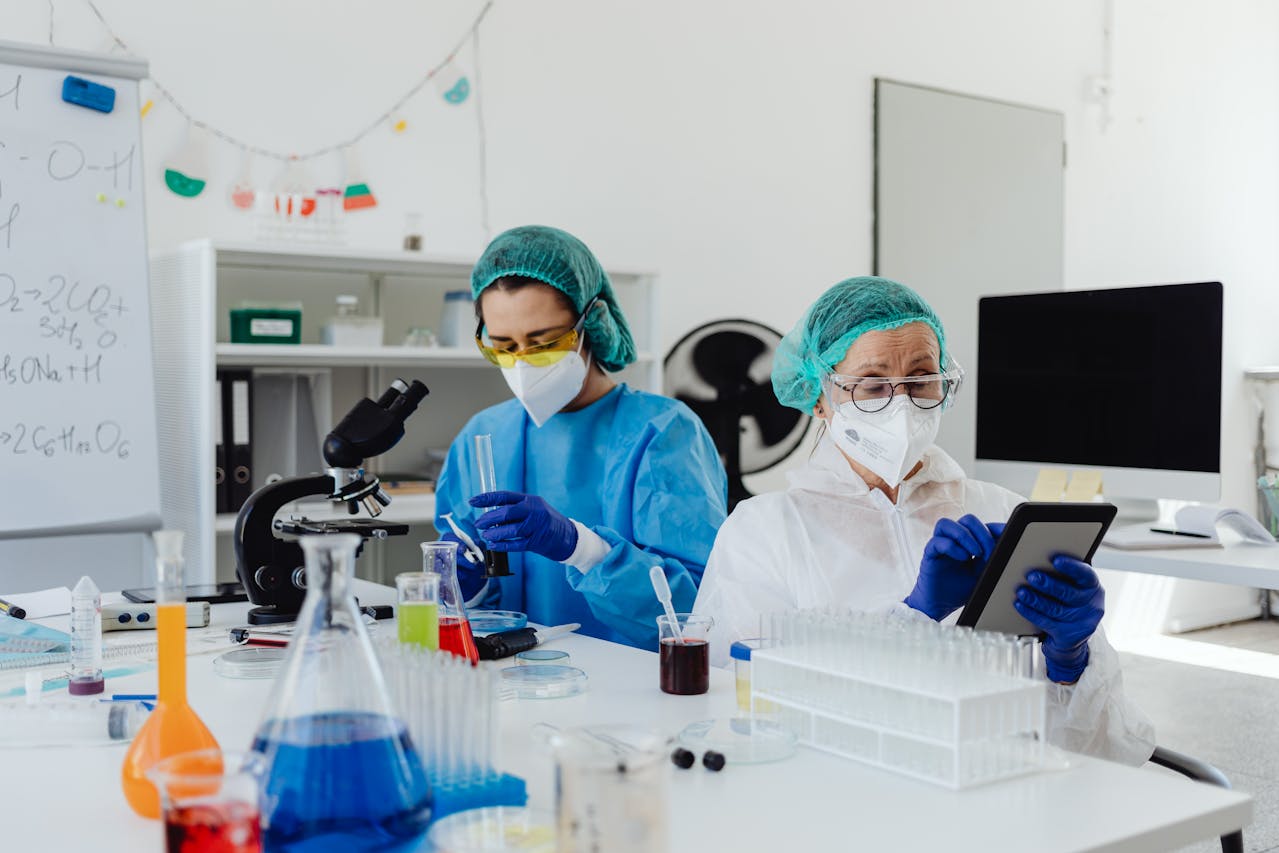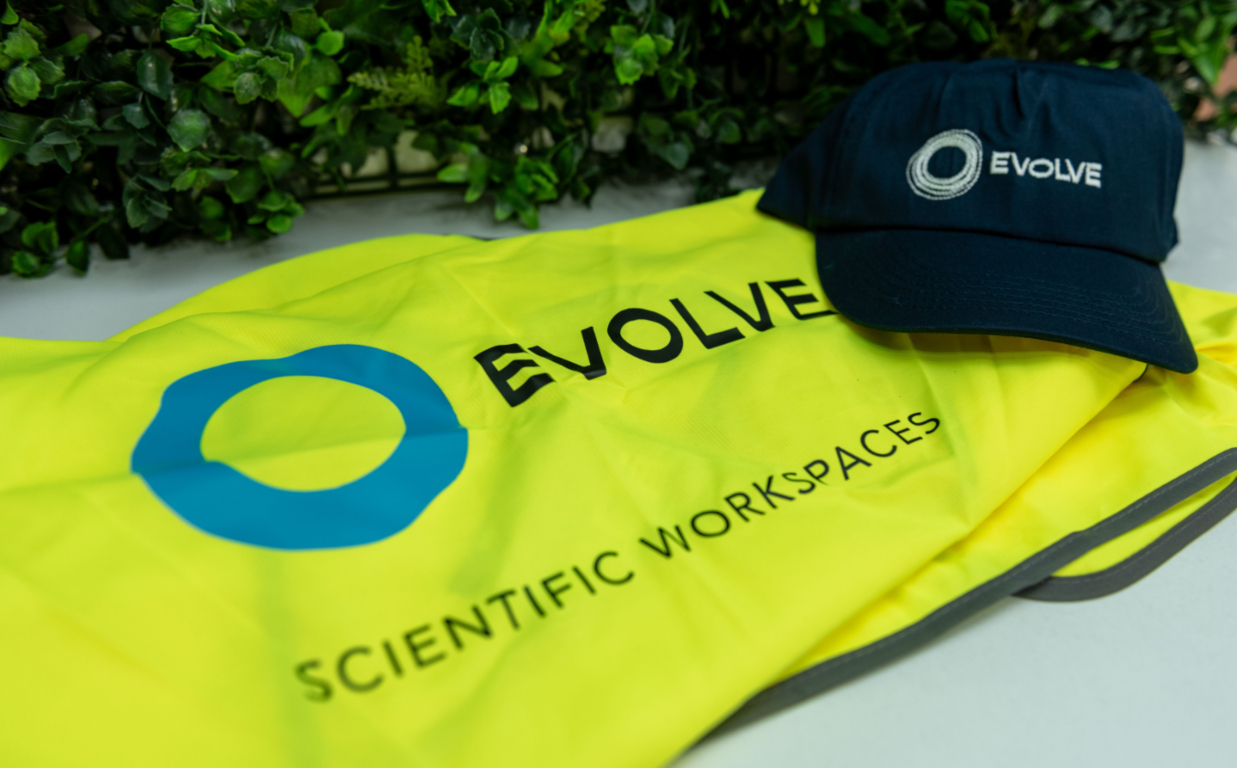The unique equipment used and work conducted in labs means they’re often some of the largest energy consumers in work environments. But it’s not just energy consumption that defines laboratories as eco-offenders. Materials, waste, and resource use contribute to a larger environmental footprint.
While sustainable lab design practices may look like they lead to a more expensive project, the opposite is generally the case. A sustainable lab is not just a financial investment but one that enriches the lives of those who work in and around the lab too.
We’ve come a long way from the labs of the past. However, the education of lab owners and staff, as well as wider stakeholders, is still ultimately at the forefront of any successful sustainably-driven project.

The importance of sustainability in lab design
Truly effective sustainability starts at the beginning of the lab’s creation. If sustainable practices can be observed in the initial design and planning stages, they pave the way for a real positive impact. A lab should be built sustainably from the ground up.
Materials should be reclaimed, reused, and sourced ethically. The use of lighting, water, and air should be considered at the concept design stage to minimise unnecessary energy use.
Considerable energy savings can be made at the design stage, which has a positive impact not only on the environment but on the overall cost of the project, too. Many lab owners are hesitant to adopt sustainable practices in favour of seemingly cheaper alternatives that bring the overall cost of their project down.
What these clients don’t realise is that long-term savings ultimately outweigh the costs of the initial design. Moreover, the positive impacts on employee wellbeing and brand reputation further strengthen the organisation’s position in the industry.
Practical ways to implement sustainable designs
We need to think pragmatically in lab design to incorporate sustainable design principles. We know that any decision we make will impact other important factors in the overall project. How will sustainable choices in materials affect hygiene and safety?
How will layout and lighting affect ergonomics and accessibility? We need to be able to navigate this delicate balancing system, taking each lab’s unique functions and risks into consideration too.
Staying on the cusp of modern lab design is paramount so we can take advantage of new and innovative lab technology and engineering. It’s vital as designers that we retain the tried and trusted elements of traditional lab design whilst exploring and harnessing lab design trends of the future.
Energy Use & Operational Carbon
So, how do we work to reduce unnecessary use so that only the energy that is required is used?
- Centralised monitoring systems capable of monitoring energy use should assist with reducing unneeded use and identifying areas of continuous improvement.
- Demand-responsive, or smart, HVAC systems are sensitive to chemical vapours, pressure changes, temperature changes, and air quality. They can respond accordingly to minimise energy consumption and also respond to occupancy in the space to minimise energy use.
- Rainwater harvesting and greywater recycling for non-potable and non-sensitive use can help conserve water and reduce water demand in labs.
- Energy-efficient and LED lightbulbs should be used in sustainable labs with proper shutdown procedures made easy. The use of natural light, where possible, can also be optimised.
- Insulation of the building and various areas should be considered to provide heating and cooling with minimal energy demands.
- Designing for remodelling and adaptation in the future will allow the incorporation of new energy-efficient solutions without the carbon footprint of a full rebuild of the lab.
- Incorporating adaptable features like modular lab interiors will also offer flexibility in lab working spaces.
As experts in the field, Evolve can advise on how energy performance can contribute towards wider corporate carbon reduction goals.
Materials, Embodied Carbon & Circularity
Here are the opportunities to make sustainable design choices regarding materials in labs:
- Choose recycled or sustainably sourced materials wherever possible. Consult the table of frameworks under ‘Standards for Sustainability’ in this article for certifications suppliers may bear to demonstrate their ethical or natural material sourcing procedures.
- Reusing and repurposing material lessens the demand for new resources.
- Selecting based on quality and longevity rather than cheaper options can lead to energy-saving benefits like better insulation and longer equipment and furniture lifespans.
- Optimising the use of natural light in the lab by incorporating light shelves, solar tubes, and transparent panelling diminishes the need for artificial light.
- Choosing VOC-free or low-VOC paints, sealants, and adhesives will improve air quality and minimise overall environmental impact.
Water Usage in Labs
Labs generally use significantly more water than traditional office spaces both for heating and cooling. Additionally, ample access to fresh water is essential for emergency points like eyewash stations and safety showers.
- Regular maintenance and repairs will prevent unwanted leaks.
- Water monitoring with associated monitoring and control.
- Staff training.
At Evolve, we put sustainability first in everything we do and forge a path of eco-conscious design for every one of our customers, marrying sustainability with efficiency, cost-saving, and innovation. Get in touch to find out how we can make your lab sustainable.

You might also be interested in
Our client-focused approach ensures a deep understanding of your unique needs
Ready to start your next project?
Evolve is your destination for cutting-edge laboratory design and equipment solutions. With our expertise, we offer unrivalled laboratory design, scientific equipment and fit out services under one roof.
With over 20 years of experience in transforming laboratory spaces across a variety of sectors, we’ve earned the trust of our clients. Rest assured, we’ll guide you through the entire project journey, providing you with peace of mind and ensuring your vision becomes a reality.
From cutting-edge research facilities to controlled environments, Evolve‘s expertise helps our clients save time, money, and enhance quality control, all while ensuring a visually appealing, future-proof laboratory space.
So, if you’re looking to create a new controlled environment, we’re your trusted partner for a laboratory space that’s fit for today and ready for the challenges of tomorrow.
To find out how we can give you one less thing to worry about, visit our Support Centre page.


